
Over at Precocious Curmudgeon, David Welsh reminds me that I’d been meaning to post a little something about Perry Moore’s new superhero-populated Young Adult novel Hero, released by Hyperion Books this fall. Hero is about a young man named Thom Creed who, nearing the end of his high-school career must deal with coming out as both a gay teenager and as a superhero.
 The thing that strikes me most strongly about the work is the tone. Hero is… dark. Really dark. As a character, Thom doesn’t have a friend in the world–no refuge from a strongly (and often violently) homophobic society and family. I think all gay teenagers can feel that they’re alone, and that the whole world is against them, but there was definitely a heightened sense of those feelings at work in Hero that matched the heightened senses and abilities of the superheroes that populated the book. The novel felt to me like the notion of The X-Men’s “Protecting a world that hates and fears them!” but to the Nth degree–at least the X-Men are a team, the gay kid here is a hated outcast even among outcasts. I was a gay teenager once upon a time, and as hopeless and shitty as the world can seem at that age (and it can and does), there’s always something or somewhere to turn. Whether it’s that one friend who ‘knows’, or the internet, or hell, ‘Kids Help Phone’ there’s something out there for gay teenagers… and something that Hero‘s gay teenager is never afforded. And then aside from having no friends, no family, and nowhere to turn, even Thom’s first sexual experience ends up being profoundly damaging, ending with his being outed and scandalized in the international media. For a novel that wants to put forward a positive message about being a gay kid, it’s deeply sex-negative in punishing the lead character, his father, his friends, and superheroism in general for acting on his gay desires. Like I said… DARK.
The thing that strikes me most strongly about the work is the tone. Hero is… dark. Really dark. As a character, Thom doesn’t have a friend in the world–no refuge from a strongly (and often violently) homophobic society and family. I think all gay teenagers can feel that they’re alone, and that the whole world is against them, but there was definitely a heightened sense of those feelings at work in Hero that matched the heightened senses and abilities of the superheroes that populated the book. The novel felt to me like the notion of The X-Men’s “Protecting a world that hates and fears them!” but to the Nth degree–at least the X-Men are a team, the gay kid here is a hated outcast even among outcasts. I was a gay teenager once upon a time, and as hopeless and shitty as the world can seem at that age (and it can and does), there’s always something or somewhere to turn. Whether it’s that one friend who ‘knows’, or the internet, or hell, ‘Kids Help Phone’ there’s something out there for gay teenagers… and something that Hero‘s gay teenager is never afforded. And then aside from having no friends, no family, and nowhere to turn, even Thom’s first sexual experience ends up being profoundly damaging, ending with his being outed and scandalized in the international media. For a novel that wants to put forward a positive message about being a gay kid, it’s deeply sex-negative in punishing the lead character, his father, his friends, and superheroism in general for acting on his gay desires. Like I said… DARK.
On the one hand, I think that makes the tone really successful in a lot of ways: the story is written from the perspective of a kid in distress and the novel is genuinely menacing throughout. I can’t tell you the dread I felt at Thom coming home to his father’s house a couple of times towards the end of the book. On the other hand, even though the kid completes the hero’s journey in the end and the novel aims to be a positive statement about coming of age as a homosexual in American society, I’d kind of be afraid to give this to an at-risk gay teenager because it’s so incredibly bleak, right through the ending of the book during which the superhero establishment still can’t… or won’t… cut the kid a break specifically because he’s gay. Sure, I’m a fan of happy endings, but I’m also a fan of balance, and I found the tone really unbalanced in an off-putting way.
That realization was a tough one for me, because the book is genuinely well-written otherwise. Author Moore has a fantastic grasp of writing action scenes that are detailed and especially illustrative, a high compliment for a book that owes so much of its soul to comic books (and superhero comics in particular). My memories of the book are entirely visual, scenes and dialogue playing out in a near-comic format and stopping short of word-balloons popping up in my mind’s-eye. There are no confusing or poorly-written passages in the story, all of the author’s intent comes across perfectly clearly. Granted, there are several large plot problems and the afformentioned pervading darkness, but the book moves along so crisply that you probably won’t notice the former until you’ve set it down with a happy sigh. The latter…?
Another strength of the narrative is the characterization, primarily of Thom but also in his relationships with several key characters including a fiery red-headed teammate, a straight-talking old southern woman, and an emotionally distant and troubled father. Read that again and you’ll see how all three of those character types are archetypes that border on cliché, and it’s to Moore’s credit that they avoid that fate. He manages to imbue each character with a good measure of humanity, mostly due to cribbing directly from conversations and relationships in his own life, according to this interview at AfterElton.com. It’s a good example of how to turn personal experience into a narrative with broad appeal. Thom as a character both coming to terms with his homosexuality and his place in the world (a shitty, oppressively dark world…) was easy to relate to as someone who’s done the same; Thom as a character coming to terms with his superpowers was easy to relate to as someone who’s read as many superhero comics as the author obviously has. Superhero fans–gay or straight–will find a lot that is both familiar and enjoyable in this novel.
But as I said, this is all at odds with a general bleakness that makes the book very hard for me to recommend to its target audience. I think I’m going to go out on a limb here and say that Moore, being a gay man of a previous generation or two didn’t have a confidant, the internet, or telephone help lines for queer and questioning youth. In that way the author’s experiences directly reflect his character’s and I feel that it’s to the characters’ detriment–as well as that of a teenaged reader. As someone who is a great fan of seemingly timeless gay-themed young adult novels like James Howes’ The Misfits and David Levithan’s Boy Meets Boy, I personally prefered the way that the characters could be challenged without a situation being necessarily undertaken alone, and without an air of hopelessness. Even Frodo got to have Sam on the trip up Mount Doom, y’know? But reading the numerous positive reviews around the internet (and helpfully catalogued at the author’s website) it seems that mine and David Welsh’s interpretations are in the minority–that the world really is that dark for queer and questioning youth and that this is the book for them.
Hero is most likely going to be enjoyed by comics fans who enjoy work like Kurt Busiek’s Astro City, comics that draw on the iconic power and history of superheroes to tell smaller, more personal and human stories (with the requisite occasional huge battle). I haven’t read the recent superhero/novel hit Soon I Will Be Invincible by Austin Grossman, but Hero seems, in focusing on a voice not often heard in the straight-white-boys-club of contemporary comics, likely to appeal to the wide swath of readers who enjoyed that tale (it even has a smart, layered, and ballsy female character to get behind as well!). But for readers either in the target audience or a few years outside of it, I’d much rather slap Levithan’s Boy Meets Boy into their hands than Hero.
But then Boy Meets Boy doesn’t feature a bitch’n fight scene between Batman and Wolverine, so it really is a tough call.
– Christopher
This review is based upon an uncorrected advance proof provided by the publisher.
 Hey there. I wrote a review of the Chris Ware-edited Best American Comics 2007 book this week, and I think it came out pretty well. In it, I was trying to walk a very fine line between respecting the vision and accomplishments of the people involved in that work, and looking at the larger North American publishing industry to see if, really, the book was indicative of what is on store shelves and what’s “good”. Over at Publisher’s Weekly, Heidi has decided to obliterate that very fine line with a shotgun, and gives us one of the worst pieces of writing I’ve ever seen her put up on the blog. I understand her sentiments, but not only do I not agree with them I also think that she uses a series of outright untruths to bolster her arguments, which are muddy at best. 50% of the comics in The Best American Comics 2007 are not as good as a work published 10 years ago? Thanks for that, that’s very relevant.
Hey there. I wrote a review of the Chris Ware-edited Best American Comics 2007 book this week, and I think it came out pretty well. In it, I was trying to walk a very fine line between respecting the vision and accomplishments of the people involved in that work, and looking at the larger North American publishing industry to see if, really, the book was indicative of what is on store shelves and what’s “good”. Over at Publisher’s Weekly, Heidi has decided to obliterate that very fine line with a shotgun, and gives us one of the worst pieces of writing I’ve ever seen her put up on the blog. I understand her sentiments, but not only do I not agree with them I also think that she uses a series of outright untruths to bolster her arguments, which are muddy at best. 50% of the comics in The Best American Comics 2007 are not as good as a work published 10 years ago? Thanks for that, that’s very relevant.
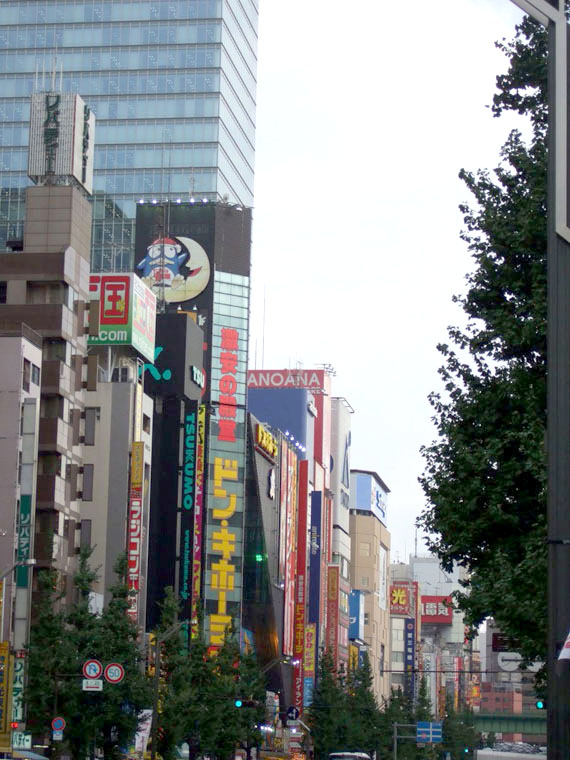
 Just as a bit of ancillary info following the post I wrote this weekend about comics journalism, Newsarama.com announced today that it has been acquired by Imaginova.com, a science and technology reporting company. “Newsarama will serve as Imaginova’s eyes and ears in the world of genre entertainment,” according to the official press release at
Just as a bit of ancillary info following the post I wrote this weekend about comics journalism, Newsarama.com announced today that it has been acquired by Imaginova.com, a science and technology reporting company. “Newsarama will serve as Imaginova’s eyes and ears in the world of genre entertainment,” according to the official press release at 
 The thing that strikes me most strongly about the work is the tone. Hero is… dark. Really dark. As a character, Thom doesn’t have a friend in the world–no refuge from a strongly (and often violently) homophobic society and family. I think all gay teenagers can feel that they’re alone, and that the whole world is against them, but there was definitely a heightened sense of those feelings at work in Hero that matched the heightened senses and abilities of the superheroes that populated the book. The novel felt to me like the notion of The X-Men’s “Protecting a world that hates and fears them!” but to the Nth degree–at least the X-Men are a team, the gay kid here is a hated outcast even among outcasts. I was a gay teenager once upon a time, and as hopeless and shitty as the world can seem at that age (and it can and does), there’s always something or somewhere to turn. Whether it’s that one friend who ‘knows’, or the internet, or hell, ‘Kids Help Phone’ there’s something out there for gay teenagers… and something that Hero‘s gay teenager is never afforded. And then aside from having no friends, no family, and nowhere to turn, even Thom’s first sexual experience ends up being profoundly damaging, ending with his being outed and scandalized in the international media. For a novel that wants to put forward a positive message about being a gay kid, it’s deeply sex-negative in punishing the lead character, his father, his friends, and superheroism in general for acting on his gay desires. Like I said… DARK.
The thing that strikes me most strongly about the work is the tone. Hero is… dark. Really dark. As a character, Thom doesn’t have a friend in the world–no refuge from a strongly (and often violently) homophobic society and family. I think all gay teenagers can feel that they’re alone, and that the whole world is against them, but there was definitely a heightened sense of those feelings at work in Hero that matched the heightened senses and abilities of the superheroes that populated the book. The novel felt to me like the notion of The X-Men’s “Protecting a world that hates and fears them!” but to the Nth degree–at least the X-Men are a team, the gay kid here is a hated outcast even among outcasts. I was a gay teenager once upon a time, and as hopeless and shitty as the world can seem at that age (and it can and does), there’s always something or somewhere to turn. Whether it’s that one friend who ‘knows’, or the internet, or hell, ‘Kids Help Phone’ there’s something out there for gay teenagers… and something that Hero‘s gay teenager is never afforded. And then aside from having no friends, no family, and nowhere to turn, even Thom’s first sexual experience ends up being profoundly damaging, ending with his being outed and scandalized in the international media. For a novel that wants to put forward a positive message about being a gay kid, it’s deeply sex-negative in punishing the lead character, his father, his friends, and superheroism in general for acting on his gay desires. Like I said… DARK. DC’s online comics initiative, Zuda,
DC’s online comics initiative, Zuda, 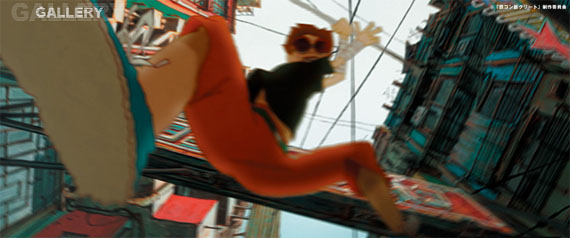

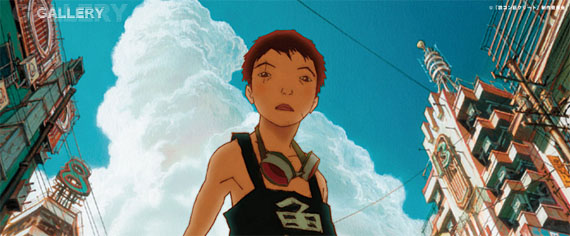
 The Word On The Street
The Word On The Street The Word On The Street
The Word On The Street 
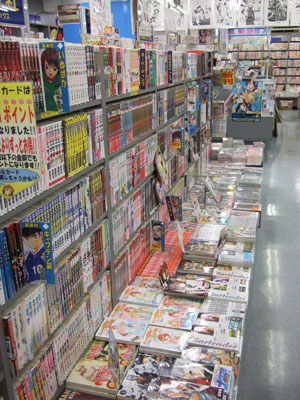 My anger is so fucking righteous.
My anger is so fucking righteous.